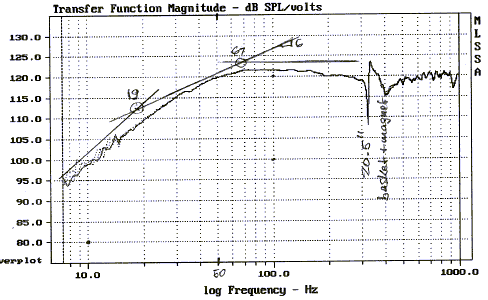One of the recent trends in loudspeaker design has been to incorporate dipole or open baffle alignments into the design. This has the obvious benefit of removing resonances within the body of air behind the diaphragm, but can this same result be achieved through another technique?
As far as I understand it, the behavior of the air within the enclosure and its effects on the loudspeaker can be thought of as a mass-spring system. The resonance or ringing due to the presence of modes within the enclosure space can be equalized out (by applying equal amplitude inversion signal processing of the resonances) because it is a linear phenomenon. The non-linear effects however can not. But where do the non-linear effects caused by the resonances arise? Is it because of nonhomogeneous pressure distribution over the surface of the diaphragm (ie higher damping in certain positions relative to lower damping in other positions) leading to erratic cone motion and thus non-linear distortion? If we managed to make the damping uniform over the surface of the diaphragm (by forcing the diaphragm to launch a 1 dimensional plane wave whose attributes only varied with distance from the diaphragm) wouldn't the observed non-linear effects due to the air vanish and become a linear phenomenon?
Thanks,
Thadman
As far as I understand it, the behavior of the air within the enclosure and its effects on the loudspeaker can be thought of as a mass-spring system. The resonance or ringing due to the presence of modes within the enclosure space can be equalized out (by applying equal amplitude inversion signal processing of the resonances) because it is a linear phenomenon. The non-linear effects however can not. But where do the non-linear effects caused by the resonances arise? Is it because of nonhomogeneous pressure distribution over the surface of the diaphragm (ie higher damping in certain positions relative to lower damping in other positions) leading to erratic cone motion and thus non-linear distortion? If we managed to make the damping uniform over the surface of the diaphragm (by forcing the diaphragm to launch a 1 dimensional plane wave whose attributes only varied with distance from the diaphragm) wouldn't the observed non-linear effects due to the air vanish and become a linear phenomenon?
Thanks,
Thadman

 And yes, it DOES help with distortion when you do that.
And yes, it DOES help with distortion when you do that.


































 .
.
Comment